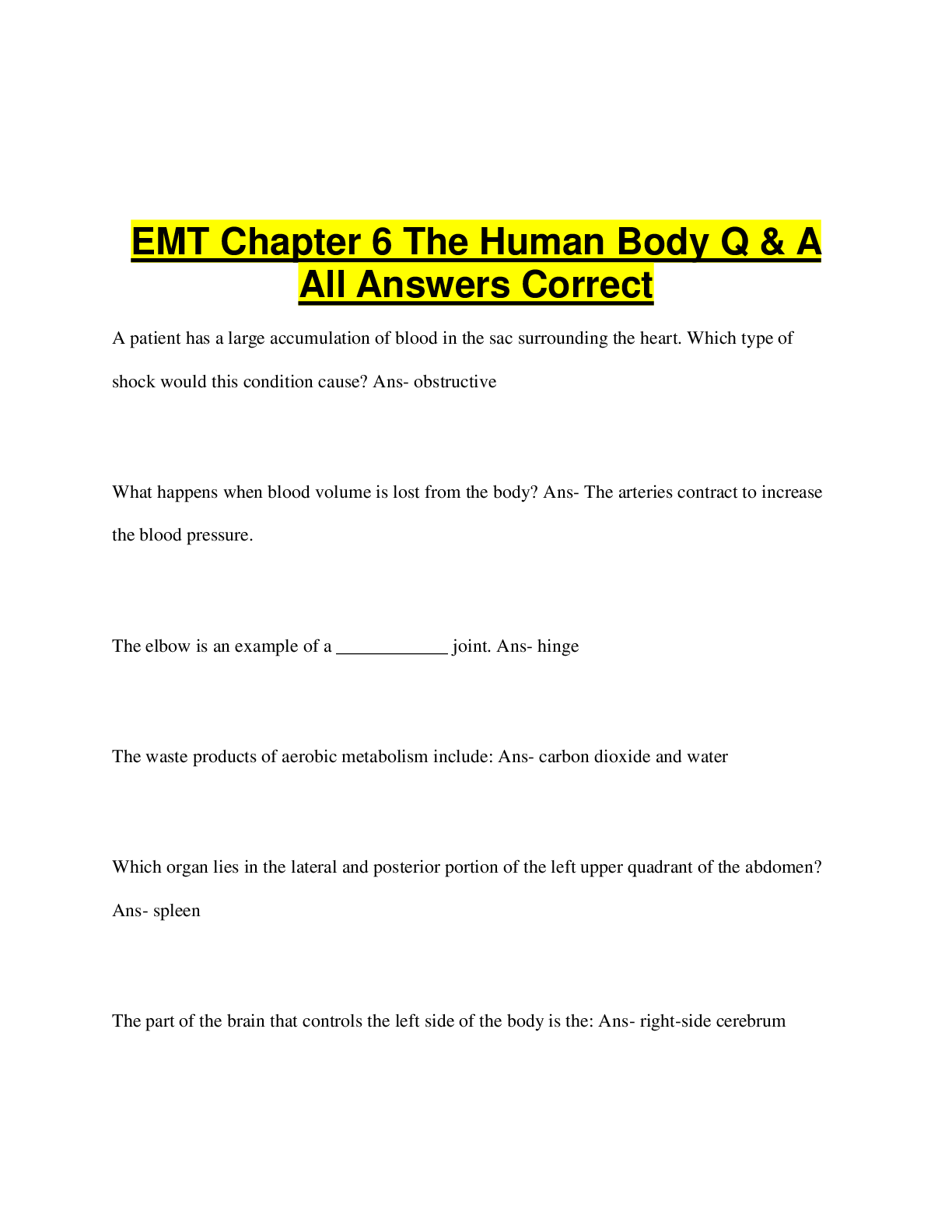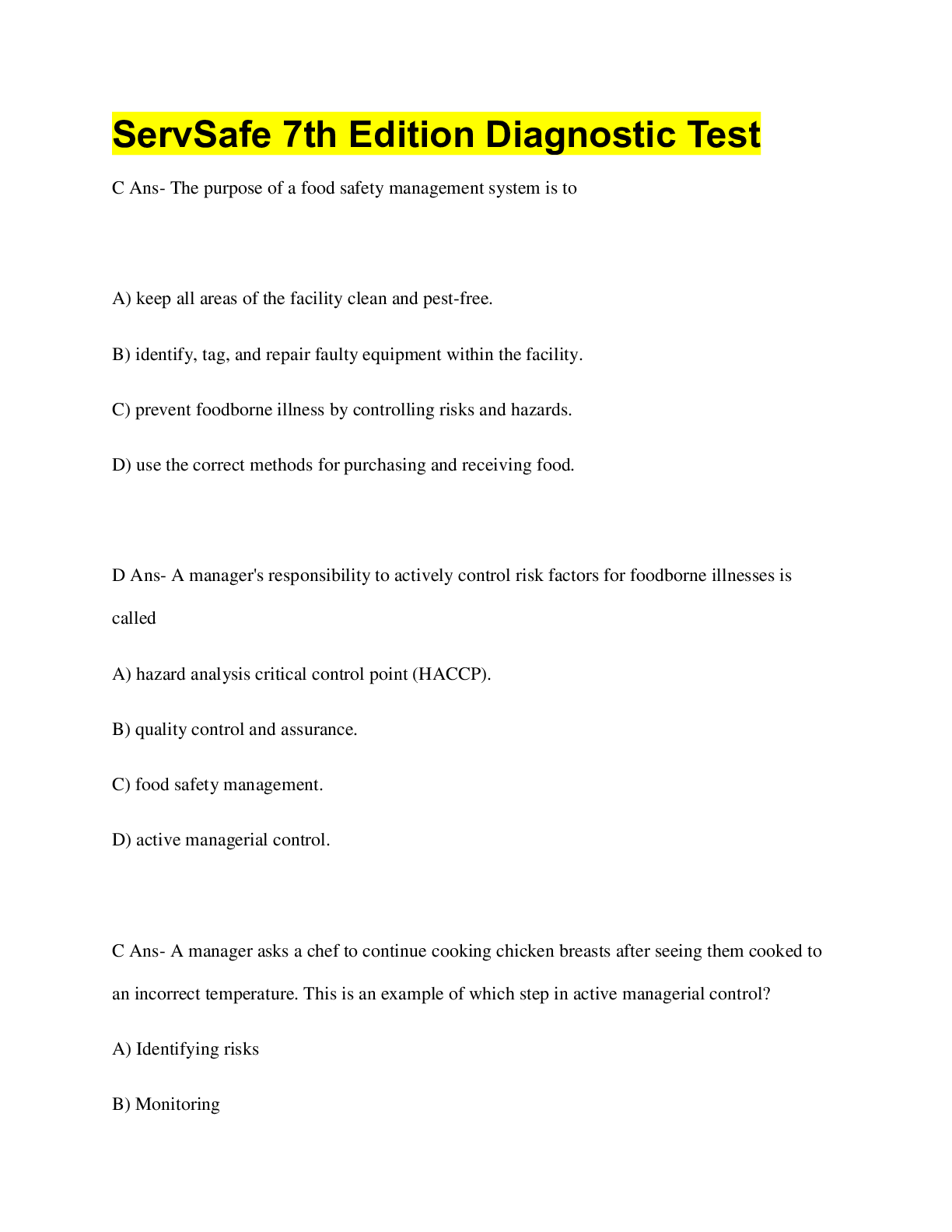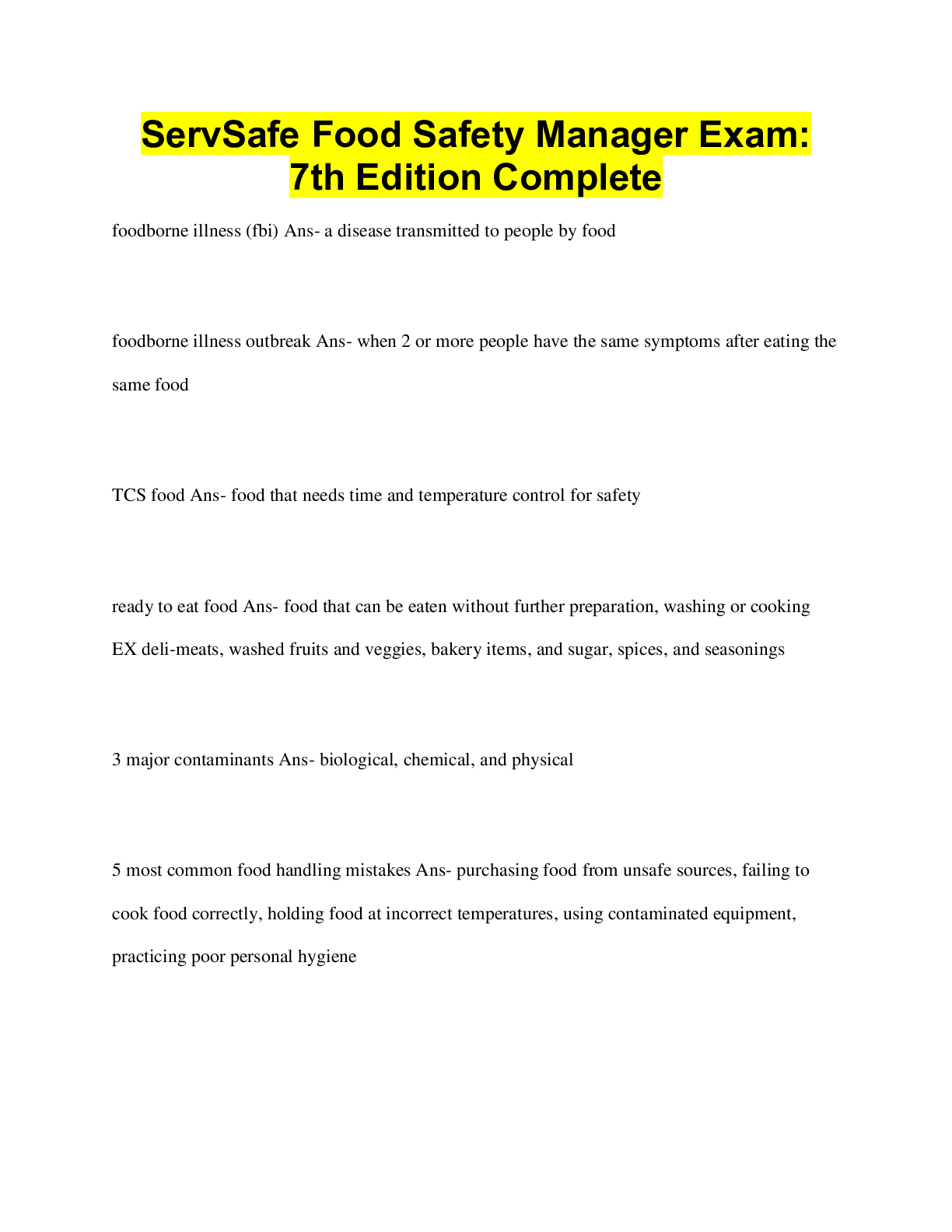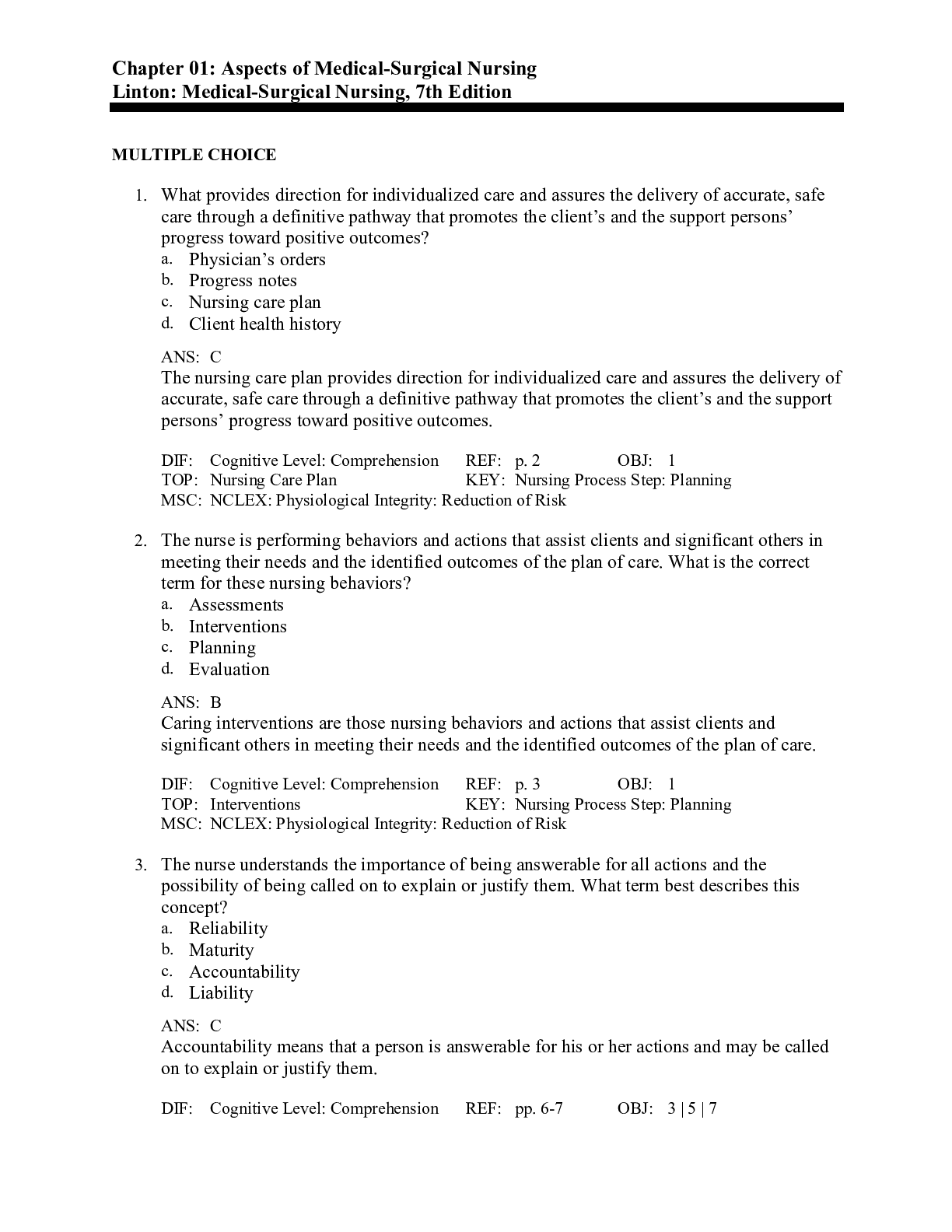EMT Chapter 6 The Human Body Q & A All Answers Correct
Document Content and Description Below
A patient has a large accumulation of blood in the sac surrounding the heart. Which type of shock would this condition cause? Ans- obstructive What happens when blood volume is lost from the body? ... Ans- The arteries contract to increase the blood pressure. The elbow is an example of a ____________ joint. Ans- hinge The waste products of aerobic metabolism include: Ans- carbon dioxide and water Which organ lies in the lateral and posterior portion of the left upper quadrant of the abdomen? Ans- spleen The part of the brain that controls the left side of the body is the: Ans- right-side cerebrum Bile is produced by the liver and concentrated and stored in the: Ans- gallbladder Which set of nerves is responsible for carrying information from the body to the central nervous system? Ans- sensory The central nervous system is composed of the: Ans- brain and spinal cord Urine is transported from the kidneys to the urinary bladder via the: Ans- ureters Which of the following is NOT a function of the skin? Ans- metabolic coordination If a patient's chest barely moves during inhalation, even if the patient's respiratory rate is normal, you should suspect that: Ans- minute volume is decreased. Which of the following is NOT true of the lymphatic system? Ans- Its vessels closely parallel the major arteries in the body. The atlas is the: Ans- first cervical vertebra, which articulates with the skull. The body's backup system of respiratory control, which is based on low concentrations of oxygen in the blood, is called the: Ans- hypoxic drive. A by-product of involuntary muscle contraction and relaxation is: Ans- heat Which of the following systems is responsible for releasing hormones that regulate body activities? Ans- endocrine Large amounts of adenosine triphosphate (ATP) are generated when: Ans- the cells function with adequate oxygen. The ___________ is made up of the maxilla and zygoma, as well as the frontal bone of the cranium. Ans- orbit What is the function of the fallopian tubes? Ans- To transport a mature egg to the uterus A patient has a blood pressure of 130/70 mm Hg. The "130" in this measurement represents: Ans- ventricular contraction. The ____________ is a muscular dome that forms the inferior boundary of the thorax, separating the thorax from the abdomen. Ans- diaphragm During each heartbeat, ___________ of blood is ejected from the adult heart, an amount called the stroke volume. Ans- 70 to 80 mL Which of the following signs of respiratory distress is typically unique to infants and children? Ans- seesaw respirations Which of the following glands regulates the function of all other endocrine glands in the body? Ans- pituitary Pathophysiology is the study of the functional changes that occur when the body reacts to a particular: Ans- disease The brain connects to the spinal cord through a large opening at the base of the skull called the: Ans- foramen magnum Which of the following structures does NOT contain smooth muscle? Ans- skeletal system Which of the following statements regarding the medulla oblongata is correct? Ans- The medulla is sensitive to pH changes and sends messages via the phrenic nerve to contract the diaphragm. As the bronchus divides into smaller bronchioles, the terminal ends of these smaller passages form the: Ans- alveoli Erythrocytes are responsible for carrying oxygen. Ans- True Blood replacement is the basic duty of the spleen. Ans- False Blood from the abdomen, pelvis, and lower extremities passes through the superior vena cava. Ans- False The pulmonary artery begins at the right side of the heart and carries oxygen-depleted blood to the lungs. Ans- True Stroke volume is the amount of blood moved in 1 minute. Ans- False The left side of the heart is a high-pressure pump that pumps blood to the body. Ans- True Pressure within the arteries when the heart is at rest is called what? Ans- diastolic blood pressure Which of the following are the functional parts of the nervous system? Ans- somatic, autonomic You arrive at the scene of an accident and observe the patient lying face-up on the ground. As you look at the front side of his body, which plane of the body are you observing? Ans- coronal After opening a patient's airway and confirming spontaneous respirations, you check for a pulse on his neck just lateral to the trachea. What artery are you palpating? Ans- carotid Which of the following substances is the main element that the bone cells use to create a hard and resilient structure? Ans- calcium What is the proper name for the cheekbone? Ans- zygoma The elbow is an example of what type of joint? Ans- hinge What structure of the brain is responsible for the level of consciousness and maintenance of vital signs? Ans- brain stem Your patient's initial pulse rate was 89 beats/min and now it is 116 beats/min. What part of the nervous system is responsible for this increase? Ans- sympathetic What type of muscle is involved when you hear your stomach growling? Ans- smooth muscle What do you call the amount of air that is moved into or out of the lungs during a single breath? Ans- tidal vo [Show More]
Last updated: 2 years ago
Preview 1 out of 7 pages

Buy this document to get the full access instantly
Instant Download Access after purchase
Buy NowInstant download
We Accept:

Reviews( 0 )
$9.50
Can't find what you want? Try our AI powered Search
Document information
Connected school, study & course
About the document
Uploaded On
Feb 12, 2023
Number of pages
7
Written in
Additional information
This document has been written for:
Uploaded
Feb 12, 2023
Downloads
0
Views
86




.png)

.png)








